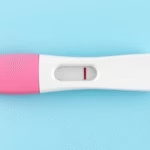Understanding Implantation Bleeding and Miscarriage
When discussing issues related to early pregnancy, implantation bleeding and miscarriage emerge as two crucial topics. Understanding the differences and nuances between these two occurrences is vital for any expectant mother or those planning to conceive. Implantation bleeding usually occurs when a fertilized egg attaches itself to the lining of the uterus, which can cause light spotting. This typically takes place around a week before a missed period and is often misinterpreted. On the other hand, a miscarriage refers to the loss of a pregnancy before the 20th week, often characterized by heavier bleeding, cramping, and other significant symptoms. While both events can cause confusion and concern, they have distinctly different implications and timing within the early stages of pregnancy.
In terms of health, recognizing these signs is essential for prompt responses and proper care. This article will delve into the key features of implantation bleeding, provide insights into miscarriage, and explore associated symptoms, risk factors, and necessary responses. By differentiating these two, we aim to provide clarity and alleviate concerns for anyone experiencing unusual bleeding or discomfort during early pregnancy.
What is Implantation Bleeding?
Implantation bleeding occurs when a fertilized egg implants itself into the uterine lining. This event takes place approximately 6-12 days after conception, leading to a slight disruption that can cause light spotting. Understanding the characteristics of implantation bleeding can distinguish it from other types of bleeding during pregnancy. It is generally light pink or brown in color and lasts for a few hours to a few days.
Women may notice implantation bleeding while they are anticipating their period. However, it is typically much lighter than a menstruation bleed. Many women describe it as feeling distinctly different, with no significant pain or cramping accompanying it. Understanding this event involves recognizing the timeframe, color, and sensation associated with the bleeding.
For individuals trying to conceive, noticing implantation bleeding can be an early sign of pregnancy, and measuring this can positively enhance their emotional experience. However, if there are concerns regarding the nature of the bleeding or if it is accompanied by worsening symptoms, consultation with a healthcare provider is key.
In essence, distinguishing implantation bleeding from menstruation involves recognizing its lighter color, brief duration, and lack of intense symptoms, highlighting its role as a significant indicator in early pregnancy.
What is a Miscarriage?
A miscarriage is defined as the natural loss of a pregnancy before the 20th week. Often accompanied by heavy bleeding, strong cramps, and the passage of tissue, it can be a distressing experience for those involved. Miscarriages may occur for a variety of reasons, ranging from chromosomal abnormalities in the fetus to health complications in the mother.
The symptoms of a miscarriage can differ widely between individuals. Common signs include moderate to severe pelvic pain, a sudden cessation of pregnancy symptoms, and a notable increase in bleeding. It is essential to recognize the severity of these symptoms, and not to confuse them with lighter experiences associated with implantation bleeding.
Several factors can contribute to the risk of miscarriage, including advanced maternal age, certain medical conditions, and lifestyle choices. Emotional responses to the loss can be profound, often leading to grief and anxiety. Understanding the triggers and signs related to miscarriage can aid individuals in seeking care, understanding their experiences, and navigating their emotions through this challenging time.
Monitoring physical signs and consulting a healthcare provider immediately when unusual symptoms arise is crucial. Distinguishing between implantation bleeding and a miscarriage can alleviate anxiety and ensure proper care.
Signs and Symptoms of Implantation Bleeding
Recognizing the signs of implantation bleeding involves understanding the physical characteristics and sensations experienced during this pivotal moment. Often, individuals may feel confused due to commonalities between this event and other types of bleeding.
The following are common signs of implantation bleeding:
- Timing: Light spotting typically occurs 6-12 days post-ovulation.
- Color: The blood may appear light pink or brown, differing from the bright red of typical menstrual blood.
- Flow: Implantation bleeding is usually very light and does not resemble a menstrual period.
- Duration: Most women experience this bleeding for a few hours to a few days.
- Discomfort: Unlike menstrual cramps, any sensations associated with implantation are typically mild.
Recognizing these signs accurately could provide positive reinforcement for those attempting to conceive and help manage their expectations. Being mindful of any additional unusual symptoms that accompany these signs is also vital.
If bleeding is accompanied by severe pain or increasing heaviness, it is advisable to consult a healthcare specialist promptly. Understanding whether the bleeding results from implantation or denotes another issue is crucial for managing emotional and physical health.
Signs and Symptoms of Miscarriage
Recognizing the signs of a miscarriage is essential for timely intervention and emotional support. Miscarriages can vary greatly in presentation, yet they often share common features that can assist individuals in identifying the condition. Educating oneself about these symptoms can empower individuals to seek immediate medical assistance and ensure adequate care.
Typical signs and symptoms of a miscarriage include:
- Bleeding: Heavy bleeding that may be bright red; this is a key differentiator from implantation bleeding.
- Cramping: Severe abdominal pain akin to strong menstrual cramps, often with a shooting or persistent pain.
- Passage of Tissue: Individuals may notice clots or tissue passing, which can be alarming but is an important symptom.
- Loss of Symptoms: A sudden cease in pregnancy-related symptoms like nausea or breast tenderness.
- Back Pain: Intense lower back pain can accompany other visible symptoms.
If individuals suspect they are experiencing a miscarriage, contacting a healthcare professional instantly is imperative. They can help address concerns, assess the situation accurately, and evaluate the need for intervention.
A timely response to these signs can help ensure proper care and support. Understanding these symptoms and their implications plays an essential role in managing emotional responses during this difficult time.
Risk Factors for Miscarriage
Being informed about potential risk factors for miscarriages can be helpful in better understanding one’s health and the underlying issues that could contribute to pregnancy loss. Although many miscarriages arise from various factors, some can be linked to certain personal or medical histories.
Common risk factors include:
- Age: Women over 35 face higher risks of miscarriage.
- Medical Conditions: Pre-existing conditions like diabetes, thyroid disease, or autoimmune disorders can heighten risks.
- Genetic Issues: Chromosomal problems, either in the mother or the pregnancy, can often lead to early pregnancy loss.
- Lifestyle Factors: Smoking, excessive alcohol intake, and drug use can negatively impact pregnancy.
- Obesity: A high body mass index (BMI) can increase complications and risks related to miscarriage.
Understanding these risk factors does not guarantee prevention of miscarriage but can lead to informed discussions with healthcare providers. Addressing controllable variables like lifestyle may help in enhancing the chances of a successful pregnancy.
Awareness of these factors may empower those trying to conceive to seek proper prenatal care and support, leading to healthier pregnancy outcomes.
When to Seek Medical Attention
Knowing when to seek medical help is vital for pregnant individuals. Early detection of abnormal symptoms can lead to better outcomes, whether associated with implantation bleeding or miscarriage. Recognizing the alarms allows individuals to take timely action and minimize risks.
Consult a healthcare professional if you observe any of the following:
- Heavy Bleeding: If bleeding exceeds standard period levels, it may require examination.
- Severe Pain: Intense cramping that encapsulates the area may indicate complications.
- Passing Tissue: Noticing tissue during bleeding could be a sign of miscarriage.
- Absence of Symptoms: If pregnancy symptoms abruptly stop, this could warrant investigation.
- Other Health Issues: Consult if experiencing any unusual gynecological symptoms that cause concern.
Feeling uneasy about changes in pregnancy is normal, and consulting a registered healthcare provider can help expedite peace of mind. Understanding the proper steps to take and maintaining open communication with healthcare professionals are crucial for ensuring well-being during this exciting yet potentially challenging time.
Final Thoughts
Understanding the differences between implantation bleeding and miscarriage leads to clarity and emotional preparedness during early pregnancy. Implantation bleeding serves as an early indication of pregnancy, marked by light spotting and minimal discomfort, while miscarriage involves the loss of pregnancy, often characterized by heavier bleeding and significant symptoms.
Symptoms associated with both conditions require understanding and awareness. Being informed about implantation bleeding can help mitigate the stress of potential misunderstandings while promoting feelings of hopefulness and empowerment regarding pregnancy. Conversely, recognizing miscarriage signs is equally imperative, allowing for immediate medical attention and emotional support when necessary.
Awareness of risk factors associated with miscarriage contributes to informed decisions regarding health and prenatal care. Proactive lifestyle changes, awareness about family histories, and open discussion with healthcare providers can significantly enhance overall pregnancy health.
Being equipped with knowledge ensures that individuals can navigate through the complexities of early pregnancy with greater assurance. Each individual’s experience may differ, but understanding common signs, when to reach out for help, and what each situation entails lays the foundation for a more empowering journey through pregnancy.
Frequently Asked Questions
- What is the difference between implantation bleeding and a miscarriage?
Implantation bleeding is light spotting that occurs as the fertilized egg attaches to the uterus, while a miscarriage involves heavier bleeding and often painful symptoms indicating pregnancy loss. - How can I identify if the bleeding is due to implantation?
Pink or brown spotting that lasts a few hours to a few days and does not resemble a regular period is likely implantation bleeding. - What are the risk factors associated with miscarriage?
Common risk factors include age, pre-existing medical conditions, lifestyle choices, and genetic issues. - When should I consult a healthcare provider about bleeding?
If the bleeding is heavy, accompanied by severe pain, or if you notice tissue passing, immediate medical attention is warranted. - Can lifestyle changes prevent a miscarriage?
While not all miscarriages can be prevented, maintaining a healthy lifestyle, avoiding harmful substances, and managing existing health conditions may improve outcomes.
Further Reading
What Type of Psychotherapy Is Best for Anxiety?







